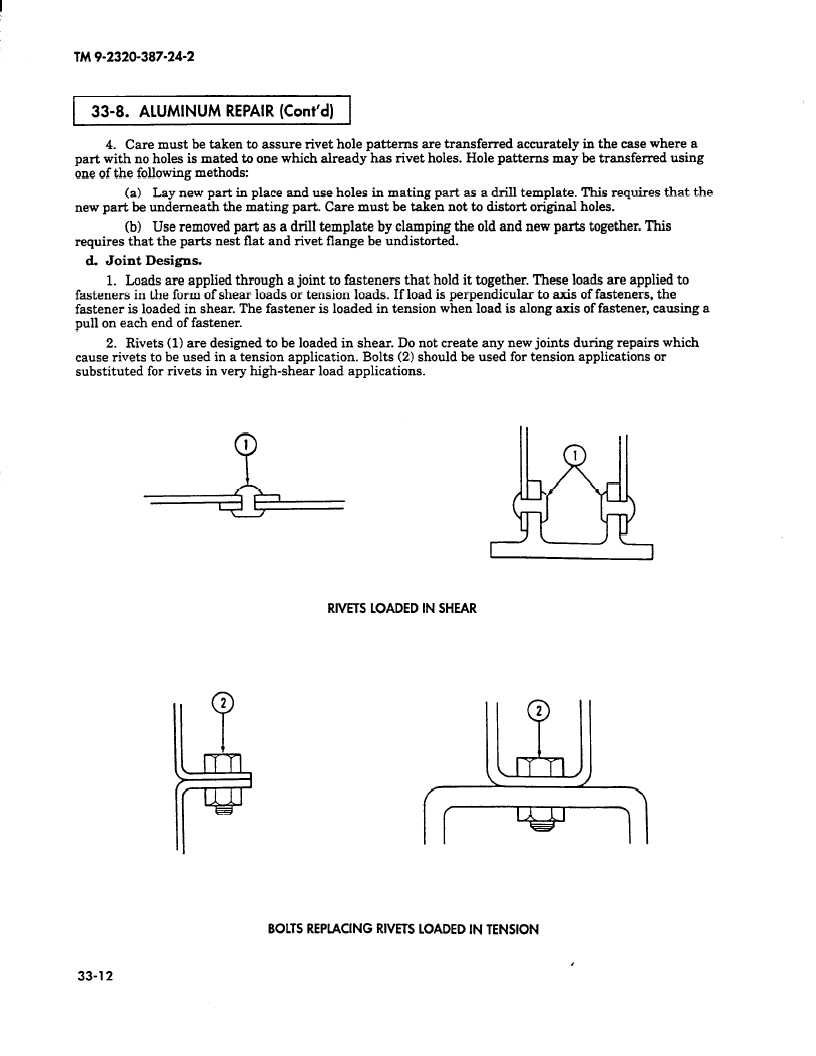TM 9-2320-387-24-2
33-8. ALUMINUM REPAIR (Co&d)
4. Care must be taken to assure rivet hole patterns are transferred accurately in the case where a
part with no holes is mated to one which already has rivet holes. Hole patterns may be transferred using
one of the following methods:
(a) Lay new part in place and use holes in mating part as a drill template. This requires that the
new part be underneath the mating part. Care must be taken not to distort original holes.
(b) Use removed part as a drill template by clamping the old and new parts together. This
requires that the parts nest flat and rivet flange be undistorted.
13. Joint Designs.
1. Loads are applied through a joint to fasteners that hold it together. These loads are applied to
fasteners in the form of shear loads or tension loads. If load is perpendicular to axis of fasteners, the
fastener is loaded in shear. The fastener is loaded in tension when load is along axis of fastener, causing a
pull on each end of fastener.
2. Rivets (1) are designed to be loaded in shear. Do not create any new joints during repairs which
cause rivets to be used in a tension application. Bolts (2) should be used for tension applications or
substituted for rivets in very high-shear load applications.
2
P
b
RIVETS LOADED IN SHEAR
BOLTS REPLACING RIVETS LOADED IN TENSION
I
33-12

